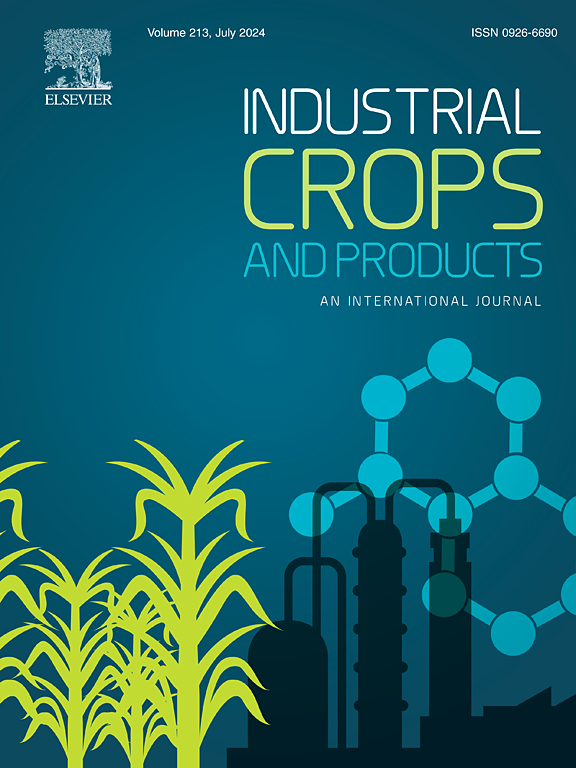创新干燥方法对接骨木花中生物活性和香气成分的影响
IF 6.2
1区 农林科学
Q1 AGRICULTURAL ENGINEERING
引用次数: 0
摘要
接骨木(Sambucus nigra)花含有丰富的类黄酮、多酚、高萜类、甾醇、精油和脂肪酸,广泛用于食品、制药和化妆品行业。然而,干燥方法对精油成分的影响仍未被研究。本研究旨在评价不同干燥方法(对流干燥、真空微波干燥、微波对流干燥、真空干燥和冷冻干燥)对上述生物活性化合物含量和形态的影响。验证了所采用的分析方法的准确性、精密度和重复性,确保了结果的可靠性。关于挥发性化合物,强调了确定目标化合物的重要性,因为所研究的挥发性化合物组在干燥方法的背景下表现出不同的关系。在60°C+ 360 W和40°C+ 120 W条件下,微波对流干燥对挥发物的保留率最高。在冷冻干燥过程中观察到最高的挥发性损失(58 %),确定这种干燥方法在提取率方面是最不稳定的方法。以3,5- o -二咖啡酰奎宁酸、绿原酸和芦丁为主的多酚类化合物。多酚、黄酮类和甾醇含量在较低温度下保持稳定,而脂肪酸谱(以棕榈酸、亚油酸和α-亚麻酸为主)在不同干燥方式下保持相对稳定。在所有干燥条件下,在多酚、甾醇、三萜或脂肪酸中没有观察到显著的定量或定性变化。在所有干燥方法中,非挥发性生物活性化合物的高稳定性强调了接骨木花作为食品,制药和化妆品行业应用的宝贵原料的潜力。在测试的技术中,中温对流干燥和低功率真空微波干燥被证明是保存非挥发性成分和选定挥发性成分最有效的技术。本文章由计算机程序翻译,如有差异,请以英文原文为准。
Changes in bioactive and aroma compounds in flower elderberry as affected by innovative drying method
Elderberry (Sambucus nigra) flowers are a rich source of flavonoids, polyphenols, higher terpenoids, sterols, essential oils and fatty acids, widely used in the food, pharmaceutical and cosmetic industries. However, the effect of drying method on the composition of essential oils remained unexplored. This research aimed to evaluate the effect of different drying methods (convective drying, vacuum microwave drying, microwave convective drying, vacuum drying and freeze drying) on the content and profile of the bioactive compounds mentioned above. The analytical method used in the study was validated for accuracy, precision and repeatability, ensure results reliability. Concerning volatile compounds, the importance of defining targeted compounds was highlighted, since the studied groups of volatile compounds show different relationships in the context of the drying methods. The highest retention on volatiles was obtained in microwave-convection drying in variants 60°C+ 360 W and 40°C+ 120 W. Highest volatile loses (58 %) where observed in freeze-drying process, identifying this drying method as the most unsitable method in terms of extraction yield. Predominated polyphenolic compounds where 3,5-O-dicaffeoylquinic acid, chlorogenic acid and rutin. Polyphenols, flavonoids and sterols contents remained stable at lower temperatures, while the fatty acid profile, dominated by palmitic, linoleic and α-linolenic acids, remained relatively constant regardless of the drying method used. Across all drying conditions, no significant quantitative or qualitative alterations were observed in polyphenols, sterols, triterpenoids, or fatty acids. The high stability of non-volatile bioactive compounds across all drying methods underscores the potential of elderberry flowers as a valuable raw material for applications in the food, pharmaceutical, and cosmetic industries. Among the tested techniques, convective drying at moderate temperature and low-power vacuum-microwave drying proved to be the most effective in preserving both non-volatile and selected volatile constituents.
求助全文
通过发布文献求助,成功后即可免费获取论文全文。
去求助
来源期刊

Industrial Crops and Products
农林科学-农业工程
CiteScore
9.50
自引率
8.50%
发文量
1518
审稿时长
43 days
期刊介绍:
Industrial Crops and Products is an International Journal publishing academic and industrial research on industrial (defined as non-food/non-feed) crops and products. Papers concern both crop-oriented and bio-based materials from crops-oriented research, and should be of interest to an international audience, hypothesis driven, and where comparisons are made statistics performed.
 求助内容:
求助内容: 应助结果提醒方式:
应助结果提醒方式:


